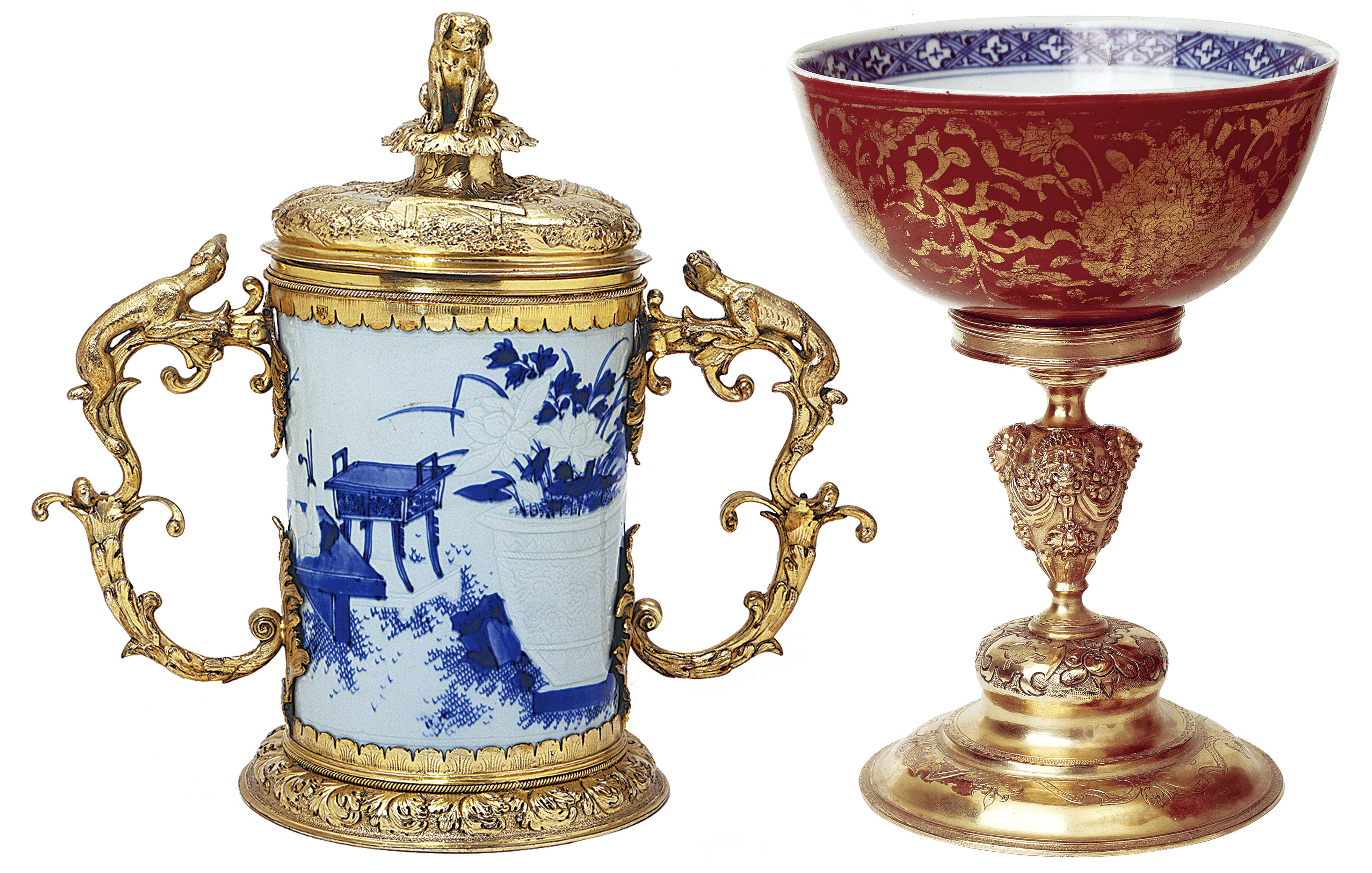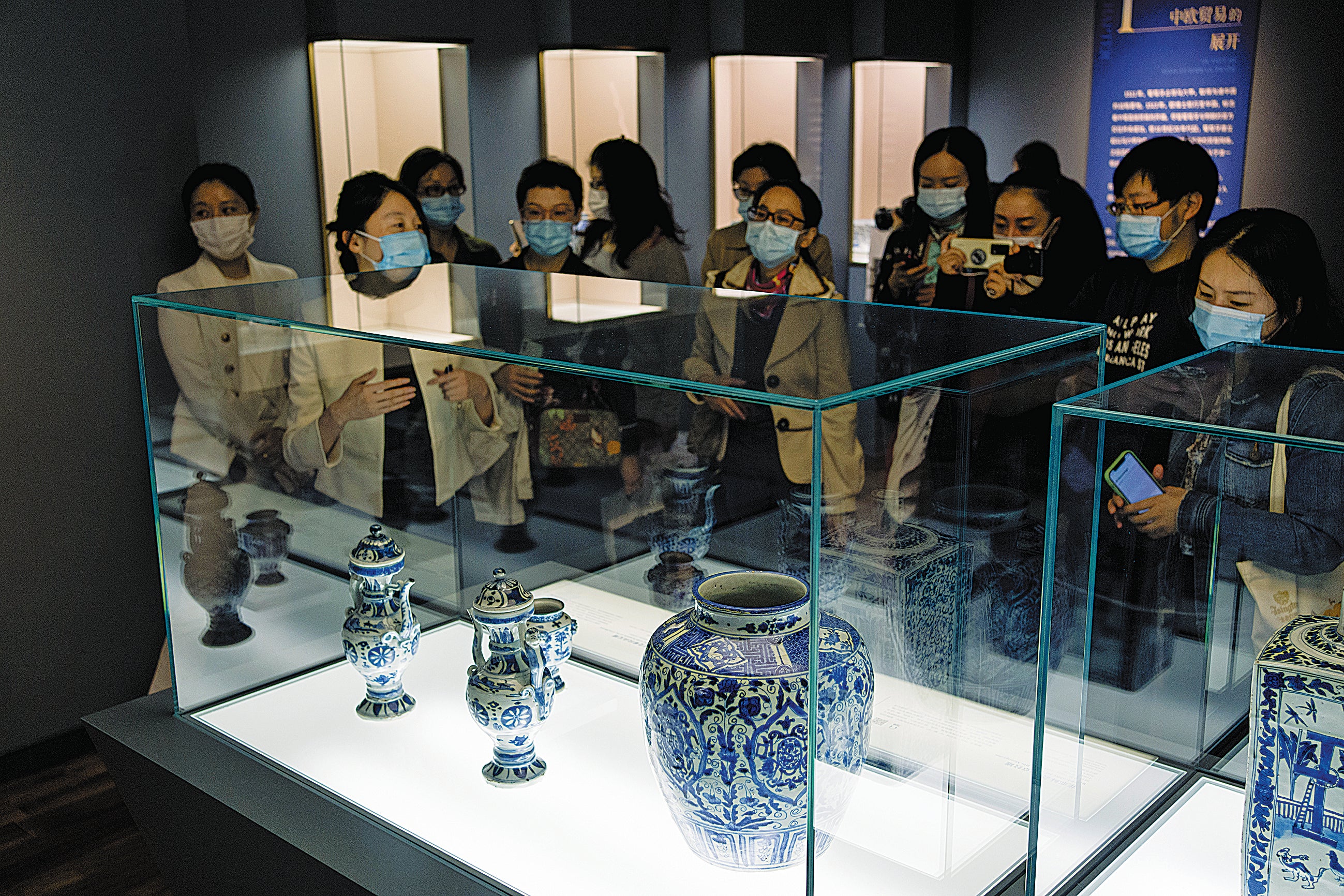Exhibition bridges East and West
THE ARTICLES ON THESE PAGES ARE PRODUCED BY CHINA DAILY, WHICH TAKES SOLE RESPONSIBILITY FOR THE CONTENTS

The painting The Annunciation by Portuguese artist Garcia Fernandes, created around 1535, depicts the story of the Archangel Gabriel telling the Virgin Mary that she is to have a child. On a ledge between the pair stands a pot of lilies which, according to experts at the Shanghai Museum, is typical of Chinese blue-and-white porcelain.
Lotus leaf designs on the shoulder and bottom of the pot, and a fish and algae pattern in the centre, are depicted. These characteristics are examples of a pot probably made in Jingdezhen, in modern-day Jiangxi province, during the Jiajing period (1522-66) of the Ming Dynasty (1368-1644).
The Annunciation is one of three original works and more than a dozen replicas of renowned paintings on display at the Shanghai Museum in which Chinese porcelain features in Western art. The replicas include The Feast of Gods by Giovanni Bellini.
Visitors can see how such porcelain was used and treated after it was exported to the west, where it figured prominently in social life.

Titled West Encounters East: A Cultural Conversation Between Chinese and European Ceramics, the exhibition is being jointly staged by the Shanghai Museum and the Musée National des Arts asiatiques-Guimet in Paris.
Yang Zhigang, director of the Shanghai Museum, said the display features artefacts from a total of 12 museums and institutions from seven countries. Being staged from October 29 to January 16, it is the largest project at the museum to involve extensive international collaboration since the start of the COVID-19 pandemic.
The exhibition features a total of 206 important ceramic items and oil paintings that depict the stories of early trade and cultural exchanges between China and Europe.
Chen Jie, who researches exported ceramics at the Shanghai Museum, said that in the 15th century, new routes were found for vessels sailing between Europe and Asia, bringing significant changes to trading between East and West, and ushering in the Age of Exploration.
Porcelain, one of the most important Chinese commodities, was sold overseas in huge quantities, Chen said.
These sales were not only evidence of the booming trade between China and Europe in the Ming and Qing (1644-1911) dynasties, but also of the exchanges of imagery, design, technology and ideas. In a cultural sense, porcelain is a medium for dialogue and interactions between East and West, she added.
An item in the prologue section of the exhibition, the Blue-and-white Kinrande Bowl with Lotus Scrolls in Silver-gilt Mounts, is from the Victoria and Albert Museum in London. It was made in Jingdezhen during the Jiajing period, and the mounting was completed in Germany around 1583. The item is 6.6 inches tall and the rim is 4.6 inches in diameter.
During the Renaissance period in Europe, porcelain from China was a rare luxury, and this piece is especially exquisite, Chen said.
Ownership of the bowl can be traced to the Manderscheid-Blankenheim family in the 16th century. An item bearing this design and featuring inscriptions on its silver base show that it was bought during the Ottoman Empire in 1583 and taken to Germany by Count Eberhart von Manderscheid, who had it mounted in Germany in memory of his brother.
Count Eberhart made a pilgrimage to Jerusalem in 1582, and the bowl was probably acquired during that journey.
Another interesting piece, also from the Victoria and Albert Museum, is a typical example of how porcelain made in China was redesigned and appeared among aristocratic circles in Europe.
The Blue-and-white Brush Pot with Antiques, Transformed into a Covered Cup was made in Jingdezhen during the reign of Emperor Chongzhen (1628-44), and was mounted on gilt silver in England between 1660 and 1670. It is 13 inches tall and the diameter at the base is 6.6 inches.
These items were designed to hold calligraphy brushes in China.
In the mid-17th century, so many pieces of Chinese porcelain were owned by aristocrats in England that their value fell significantly. Only the finest and most-prized items were mounted with silver or gold.
Previously published on Chinadaily.com.cn
